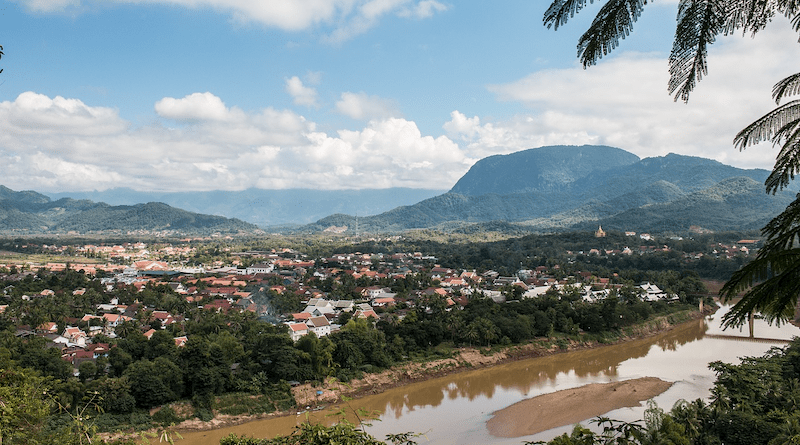Mekong River Sand Mining Is A Crumbling Castle – Analysis
By Lilla Szabó*
Sand is the most mined resource worldwide, yet not many are aware of the global environmental crisis stemming from over-extraction. River sand is the main ingredient of concrete — a core resource in construction. While the building boom and rapid urbanisation in developing countries create unprecedented demand for river sand, the sector remains unregulated and unsustainable.
Southeast Asia is no exception. River sand mining is present in most ASEAN countries. Yet the issue is especially alarming in the five ASEAN countries along the Mekong River — Myanmar, Thailand, Laos, Cambodia and Vietnam. River sand in the region is extracted faster than it can naturally renew, with the demand in Asia forecast to rapidly rise.
River sand over-extraction leads to river erosion and degradation as well as huge floods that are forecast to destroy the biodiversity and livelihood of millions in Southeast Asia. With the consequential disruptions in fishing and agriculture, contamination of freshwater and air, and collapsing infrastructure along the crumbling river banks, the prospects are grim. The issue of over-extraction only becomes visible once serious damage has already been done.
The greatest demand for sand comes from Singapore. Its biggest sources are Cambodia, Indonesia, Malaysia, Myanmar and Vietnam. Several ASEAN countries banned sand exports and applied restrictions on extracting in the past. But this only drove sand miners to neighbouring countries and kept the threat in the region. The case of the Mekong illustrates the nature of the risk — even if sand mining is unsustainable in one country along the Mekong, it impacts the whole river and all those living near.
The transboundary nature of the threat requires a transboundary policy solution. ASEAN needs a harmonised policy approach to eradicate unsustainable river sand mining in Southeast Asia.
ASEAN governments should promote sustainable long-term alternatives through a coordinated universal tax on sand outputs and exports. To attain this, the emphasis now should be put on building the initial base for sand governance.
The sand mining sector within ASEAN is largely ungoverned without a centralised regulatory body to oversee the industry. ASEAN’s environmental framework can give way to such a dialogue. Southeast Asian countries should recognise that a common, universal stance of national governments is needed to mitigate the potential environmental crisis stemming from river sand mining.
There should not be a complete ban on river sand extraction. Given the overwhelming demand, this would be unrealistic as it would only fuel the black market, smuggling and corruption.
The long-term solution to eradicate unsustainable river sand mining is the promotion of sustainable alternativesthat are cost-effective and on par with minimal commercial standards. Such alternatives are manufactured sand and recycled quarry dust.
All ASEAN countries should levy a coordinated universal tax on river sand mining outputs and exports. The output and export tax would serve as a two-fold targeting mechanism to advance more sustainable alternatives.
First, the taxes would drive up the cost of river sand. The construction industry would be more inclined to adopt sustainable alternatives as river sand will no longer have a significant cost advantage.
Second, the taxes would create government revenue. Part of the tax revenue should be used to establish an environmental trust fund for research related to sustainable alternatives and environmental practices. In practice, this could be an environmental restoration program designed and implemented as part of the permission to extract. The tax would reflect the duty of the sand miners to moderate or potentially reverse their effect.
Though this is the end goal, ASEAN lacks a basic governance mechanism that would allow the implementation of such a universal tax rate on river sand. ASEAN must first address the lack of transparency on sand consumption and poor data on exports. Possible solutions could be the harmonised restriction of mining at vulnerable sites, increased sand mining monitoring via radars, and tighter regulations of mining permits at the regional level. This could ensure a firmer base for joint governance.
Since a core part of the sand mining problem is the widespread ignorance towards its existence, special emphasis should be put on awareness campaigns. The work of brave journalists and activist groups — such as Mother Nature Cambodia — remains indispensable. Raising awareness of the threats of sand mining through educational and training programs should be a priority for ASEAN countries since the expected growth in sand demand means the issue is here to stay.
Educational programs in Sri Lanka have already been proven to yield positive results in the country’s battle against illicit sand mining. The campaign should engage government officials, the media, youths and NGOs to facilitate transparency, responsibility and accountable participation of all stakeholders. It would serve as a platform to share the wisdom of environmentalists and researchers as well as the struggle of millions of locals, farmers and fishermen across all ASEAN countries.
*About the author: Lilla Szabó is a student of Economic Diplomacy at the University of Economics in Bratislava, currently a visiting student at Tokyo International University.
Source: This article was published by East Asia Forum

